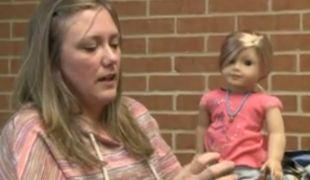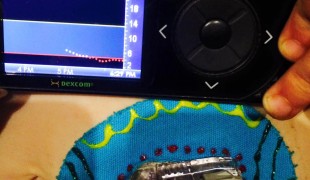- 9299
- 570
- 10
- 6
- 0
- Help Ukraine
About the solution
William's invention is a small, 3D printed plastic disposal unit that fits into testing kits used by diabetics. Diabetics can feed strips into it throughout the day, and dispose them all when it gets full.
Grame, who has type 1 diabetes, sometimes needs to test his blood up to 10 times a day and had the habit of leaving them on the floor. “It’s important to diabetics because they always get in trouble for leaving their test strips everywhere,” said the boy.
The device he came up with is small enough to fit inside a diabetic’s portable test kit, and can hold up to 50 used test strips before needing to be emptied in the garbage. That means that users can carry it with them all day, and make use of it even in places where there wouldn’t usually be a trash—whether they’re at a park, a show, or just out of reach at home. While at 3D printing camp earlier in the year, Grame drew up the blueprints, printed the prototype, and successfully tested it over several months.
Adapted from: http://bit.ly/2fnIvsp
What about you, do you have any solutions? Please share them with the Patient Innovation community!
这些解决方案不应包括使用药物,化学品或生物制品(包括食品);创伤性设备;冒犯性的,商业或内在危险的内容。该解决方案未经医学验证。请谨慎进行!如果您有任何疑问,请咨询健康专家。
DISCLAIMER: This story was written by someone who is not the author of the solution, therefore please be advised that, although it was written with the utmost respect for the innovation and the innovator, there can be some incorrect statements. If you find any errors please contact the patient Innovation team via info@patient-innovation.com
-
-
625
-
0
-
8769

Girl gets insulin pump on her doll to match her own
CAREGIVING
diabetes type 1
diabetes type 2
3d Printed
Educational/Leisure device (book, toy, game...)
Muscle weakness
Excessive thirst or hunger
Increased urination
Dry skin
Depression or anxiety
Fatigue
Weight gain
Managing diabetes
Enhancing Mental Health
Caregiving Support
Endocrinology
General and Family Medicine
Pediatrics
United States
-
-
-
346
-
0
-
3917

Diabmate
CAREGIVING
(SELF)-CARE: EATING: Eating independently.
(SELF)-CARE: DRINKING: Drinking independently.
COMMUNICATION: Communicating, whether by speaking, listening, or other means
diabetes type 1
diabetes type 2
Gestational Diabetes
App (Including when connected with wearable)
AI algorithm
Muscle weakness
Excessive thirst or hunger
Fatigue
Enhancing health literacy
Promoting self-management
Managing diabetes
Manage Medication
Preserving Organ Function
Building Supportive Community Relationships
To improve Treatment/Therapy
Preventing (Vaccination, Protection, Falls, Research/Mapping)
Raise awareness
Caregiving Support
Endocrinology
General and Family Medicine
Gynecology and Obstetrics
Internal Medicine
Pediatrics
France
-
-
-
640
-
0
-
9892

Mother develops patches for her diabetic daughter
-
 zh
zh